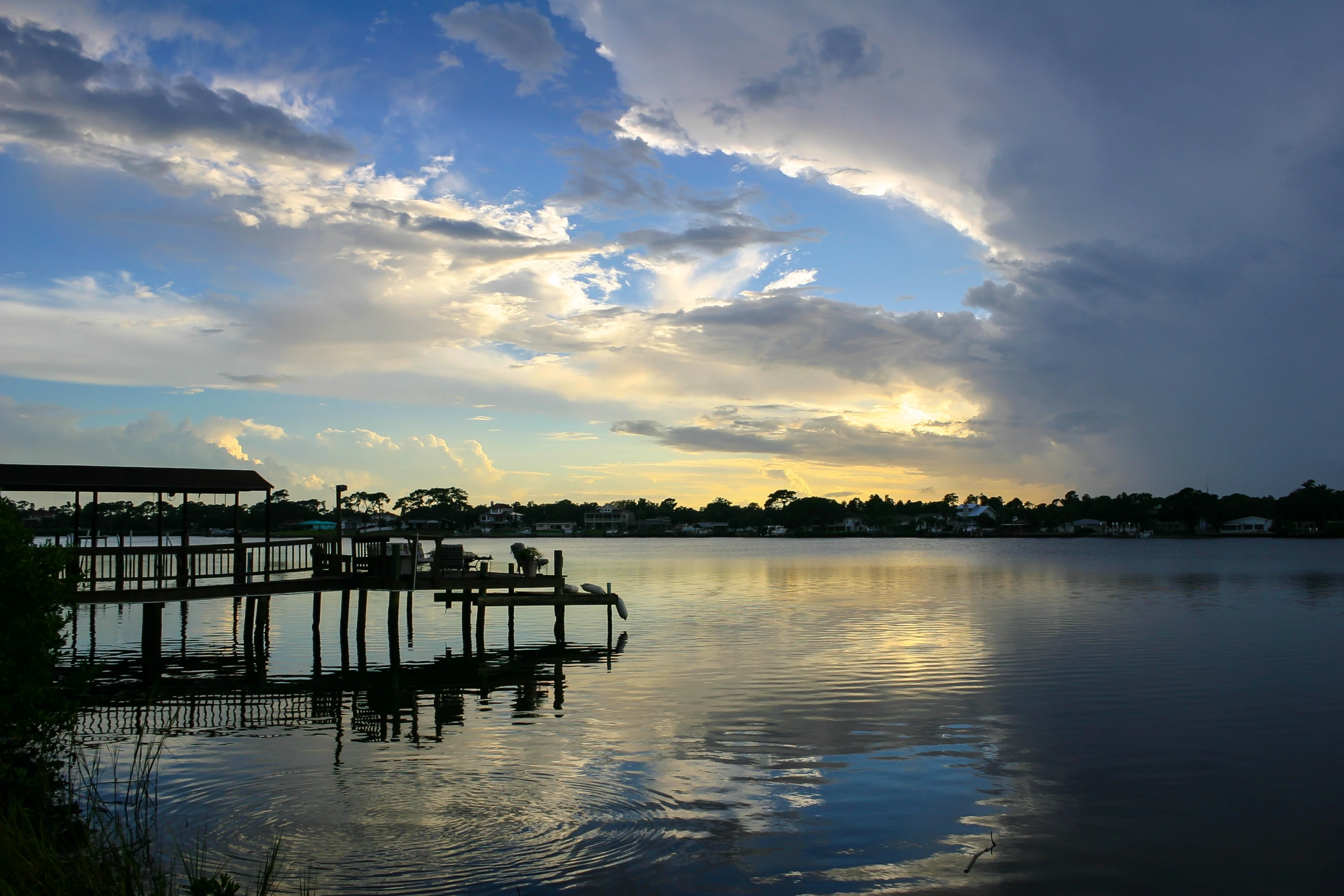
What determines the direction a PWC will travel? Check Out Our PWC Boating Test Guide
Welcome to our comprehensive guide on what determines the direction a personal watercraft (PWC) will travel! Whether you’re studying for your boater licensing and certification tests or seeking valuable insights as an experienced boater, you’ve come to the right place. In this article, we’ll delve into the intricacies of PWC steering, providing you with the essential knowledge needed to navigate these watercraft safely and effectively. With our expertise in boating test content, you can trust that you’re receiving the most up-to-date and accurate information. Let’s dive in and explore the fundamentals of PWC steering together!
Table of Contents
- What determines the direction a PWC will travel?
- Which action may cause the loss of steering ability in a personal watercraft (PWC)?
- How PWC steering, controls, and stopping works:
- You are operating a PWC. what will happen if you shut off the engine
- What is needed for steering control on a PWC
- How is a personal watercraft propelled through the water?
- What happens when a PWC steering is turned to the right?
- What is needed for steering control on a PWC?
- Where is the steering nozzle located on a PWC?
- What is the most important thing to remember about steering a PWC?
- What happens when a PWC’s steering control is turned to the right?
- PWC operators need to keep in mind that a jet drive requires what, for maneuverability.
- Most important thing to remember about steering a PWC
- Where is the steering nozzle located on a PWC?
- What is needed for steering control of PWC?
- Which way will the PWC go?
- What is used to control the PWC speed?
- How do you transport PWC?
- Check out our other study guides for boating test questions:
- Getting Certified: Passing your boat exam
What determines the direction a PWC will travel?
The direction a personal watercraft (PWC) will travel is determined by the direction of the jet thrust produced by its jet propulsion system, controlled by the operator’s manipulation of the handlebars.
Other factors that may influence the direction a PWC will travel include:
- Steering input from the operator: By turning the handlebars left or right, the operator can direct the PWC in the desired direction.
- Throttle control: Adjusting the throttle controls the speed of the PWC, which indirectly affects its direction by altering the force of the jet thrust.
- Hydrodynamic forces: The shape of the hull and the interaction with water can also influence the direction of travel, especially at higher speeds or when making sharp turns.
- External factors: Currents, waves, wind, and other environmental conditions can impact the PWC’s trajectory and require adjustments from the operator to maintain control.
Which action may cause the loss of steering ability in a personal watercraft (PWC)?
If you release the throttle to idle or if the engine shuts off during operation, you will lose all steering control. In either situation, the PWC will continue in the direction it was headed before the throttle was released or the engine was shut off.
Several factors could lead to the loss of steering ability in a personal watercraft (PWC), including:
- Mechanical failure: Malfunctions or damage to steering components such as the steering cable, handlebars, or steering nozzle can impair steering responsiveness.
- Obstructions in the water: Debris, aquatic plants, or other objects in the water may interfere with the steering mechanism, making it difficult to control the PWC.
- Improper maintenance: Neglecting routine maintenance tasks such as lubricating steering components or inspecting for wear and tear can result in steering issues over time.
- Operator error: Incorrect use of the throttle or handlebars, sudden movements, or overcorrection while maneuvering can lead to loss of control and steering problems.
- Environmental conditions: Rough water, strong currents, or high winds can affect the PWC’s stability and make steering more challenging, particularly for inexperienced operators.
How PWC steering, controls, and stopping works:
PWC steering relies on a jet drive system, where water is drawn into a pump and forced out under pressure through a steering nozzle at the back of the unit. When the steering control is turned, the steering nozzle turns in the same direction, altering the direction of the jet of water and consequently, the PWC’s movement. However, it’s crucial to remember that maintaining power is essential for steering control. If the engine is allowed to return to idle or shut off during operation, steering control may be lost. Additionally, PWCs do not stop immediately after releasing the throttle, so ample stopping distance should always be maintained. When it comes to reversing, PWCs can maneuver in reverse by redirecting the jet of water using a cup mechanism, though this is less efficient and slower than forward motion. Understanding these steering mechanisms and safety precautions is essential for safe and efficient PWC operation.
PWC steering, controls, and stopping involve several key components:
- Steering Mechanism: PWC steering is controlled by a steering column linked to cables that manipulate the direction of the steering nozzle at the rear of the vessel. Turning the steering control alters the orientation of the nozzle, directing the jet of water and changing the PWC’s direction accordingly.
- Steering Controls: The steering controls on a PWC function similarly to those on a motorcycle, allowing the operator to turn left or right by manipulating the handlebars. These controls are connected to the steering mechanism inside the PWC’s body.
- Jet Drive System: Unlike traditional boat motors with propellers and rudders, PWCs utilize a jet drive system. Water is drawn into a pump located under the craft and forced out through a nozzle at the rear, propelling the PWC forward.
- Stopping Distance: PWCs do not stop immediately after releasing the throttle. Even models equipped with braking systems require some distance to come to a complete stop. Therefore, operators should allow ample stopping distance, especially in crowded or hazardous conditions.
- Reverse Operation: Some PWC models are equipped with reverse functionality, allowing them to maneuver in reverse. This is achieved by redirecting the jet of water using a cup mechanism, though reverse motion is typically slower and less efficient than forward motion.
Understanding these components and how they interact is essential for safe and effective PWC operation.
Here are more common questions that you should be aware of before taking your boating test. We will review all of the other scenarios that determine the direction a PWC will travel.
You are operating a PWC. what will happen if you shut off the engine
If you shut off the engine while operating a PWC, you will lose all steering control. As a result, the PWC will continue in the direction it was headed before the engine was shut off, regardless of any steering inputs. This is because PWCs rely on engine power to maintain control, and without power, they cannot redirect the jet of water for steering. Therefore, it’s crucial to keep the engine running to maintain steering ability and control the direction of the PWC.
What is needed for steering control on a PWC
Steering control on a PWC is facilitated by the jet drive system, which uses a steering control connected to the steering nozzle at the back of the unit. When the steering control is turned, the steering nozzle also turns in the same direction, altering the direction of the jet of pressurized water expelled from the PWC. This change in direction of the jet thrust allows the operator to maneuver the PWC in the desired direction. However, it’s important to note that steering control requires engine power, and without it, steering ability is lost.
How is a personal watercraft propelled through the water?
A personal watercraft (PWC) is propelled through the water by a jet drive system. This system draws water into a pump located inside the craft and then expels it under pressure through a steering nozzle at the back of the unit. As the pressurized water is forced out of the nozzle, it creates a jet of water that propels the PWC forward. By manipulating the steering control, the operator can control the direction of this jet of water, thereby steering the PWC in the desired direction.
What happens when a PWC steering is turned to the right?
When a PWC steering is turned to the right, it causes the steering nozzle at the back of the watercraft to also turn to the right. This movement redirects the jet of pressurized water expelled from the nozzle, pushing the back of the PWC to the left. As a result, the PWC turns to the right in the direction indicated by the steering input.
What is needed for steering control on a PWC?
For effective steering control on a personal watercraft (PWC), several factors are crucial:
- Throttle Application: Steering a PWC requires the throttle to be engaged. Without applying throttle, the jet drive system does not produce thrust, making it difficult to steer.
- Handlebar Operation: The handlebar is used to control the direction of the PWC. Turning the handlebar to the right or left directs the jet of water to create the desired steering effect.
- Proper Weight Distribution: Maintaining balance and distributing weight properly helps in steering control. Shifting weight to the side you wish to turn can enhance the turning response.
- Awareness of Speed: At higher speeds, PWCs are more responsive to steering inputs. Conversely, at lower speeds, steering can be less effective, so adjusting speed according to maneuvering needs is important.
- Understanding of Jet Drive Mechanics: Unlike propeller-driven boats, PWCs use a jet drive system. This means that water is drawn in and expelled at high speed to propel and steer the craft, making it essential to maintain the jet pump free of debris.
- Regular Maintenance: Ensuring that the steering components and jet pump are in good working order through regular maintenance is vital for safe and effective control.
By combining throttle control, handlebar operation, weight distribution, appropriate speed, and an understanding of the jet drive system, operators can achieve precise steering control on a PWC. Regular maintenance further ensures that the steering system functions optimally.
Where is the steering nozzle located on a PWC?
The steering nozzle on a personal watercraft (PWC) is located at the rear of the craft, directly behind the jet pump. The jet pump draws in water and expels it through this nozzle at high speed, providing both propulsion and steering control. By turning the handlebar, the operator adjusts the direction of the steering nozzle, which redirects the jet of water to steer the PWC in the desired direction.
What is the most important thing to remember about steering a PWC?
The most important thing to remember about steering a PWC is that you need throttle to maintain steering control. Unlike traditional boats with rudders, PWCs rely on jet propulsion, which means they only steer effectively when there is water being pushed through the jet pump. Reducing the throttle too much or releasing it entirely will result in a significant loss of steering control, making it difficult to maneuver and increasing the risk of accidents.
What happens when a PWC’s steering control is turned to the right?
When a PWC’s steering control is turned to the right, the steering nozzle, which is located at the rear of the PWC, directs the jet of water to the left. This causes the PWC to turn to the right. The steering system works by redirecting the flow of water ejected from the jet pump, so turning the handlebars to the right moves the steering nozzle to the left, creating a right turn for the PWC.
PWC operators need to keep in mind that a jet drive requires what, for maneuverability.
PWC operators need to keep in mind that a jet drive requires power for maneuverability.
Most important thing to remember about steering a PWC
The most important thing to remember about steering a PWC is that you need to have power in order to maintain control.
Where is the steering nozzle located on a PWC?
The steering nozzle on a PWC is typically positioned at the rear of the watercraft, directly behind the rider’s seating area. It is a specialized component that directs the flow of pressurized water expelled from the jet propulsion system. This nozzle can be moved left or right to alter the direction of the water jet, thereby steering the PWC in the desired direction.
What is needed for steering control of PWC?
Steering control on a personal watercraft (PWC) requires a combination of mechanical components and rider input. The primary components involved in steering control include the handlebars or steering column, which the rider manipulates to turn the PWC in the desired direction, and the steering nozzle located at the rear of the watercraft. When the rider turns the handlebars or steering column, it causes the steering nozzle to pivot, directing the flow of water expelled from the jet propulsion system. This redirection of water thrust allows the PWC to change direction accordingly, providing steering control. Additionally, rider balance and weight distribution play a role in the overall maneuverability of the PWC, especially during sharp turns or evasive maneuvers.
Which way will the PWC go?
When the steering control of a PWC is turned to the right, the watercraft will turn in the same direction, towards the right. This happens because the turning motion of the steering control causes the steering nozzle at the rear of the PWC to pivot to the right, redirecting the flow of water expelled from the jet propulsion system. As a result, the watercraft changes direction, moving towards the right.
What is used to control the PWC speed?
The speed of a PWC is typically controlled using a throttle lever, similar to the throttle on a motorcycle or a snowmobile. By manipulating the throttle lever, the operator can increase or decrease the speed of the PWC.
How do you transport PWC?
Transporting a PWC (personal watercraft) typically involves the use of a specialized trailer designed to accommodate the watercraft’s shape and size. Here’s a basic overview of how to transport a PWC:
- Trailer Preparation: Ensure the trailer is in good condition, with properly inflated tires, working lights, and secure tie-down points. Make sure the trailer is properly hitched to the towing vehicle.
- Loading the PWC: Back the trailer into the water until the rear portion is submerged enough to float the PWC. Then, carefully drive or guide the PWC onto the trailer, ensuring it is centered and secure.
- Securing the PWC: Once the PWC is positioned correctly on the trailer, secure it using straps or tie-downs attached to designated anchor points on the trailer. Ensure the straps are tight and the PWC is stable.
- Checking Connections: Double-check that all trailer connections are secure, including the hitch, safety chains, and trailer lights.
- Removing from Water: Carefully pull the trailer out of the water using the towing vehicle, ensuring the PWC remains secure during the process.
- Transporting: Drive cautiously while transporting the PWC, obeying speed limits and taking care when turning or braking.
- Unloading: When you reach your destination, reverse the loading process, carefully unloading the PWC from the trailer and returning it to the water.
- Securing Trailer: Once the PWC is unloaded, properly secure the trailer in a safe location, ensuring it won’t roll or become a hazard.
By following these steps, you can safely transport your PWC to and from the water for enjoyable recreational use.
Check out our other study guides for boating test questions:
- What is draft on a boat?
- How to choose a marine gps app
- The 5 best boating weather apps for 2024.
Getting Certified: Passing your boat exam
Start your safe boating journey at boat-ed.com. Their accredited courses, recognized by NASBLA, the National Association of State Boating Law Administrators, make learning boater safety, etiquette, and water rules easy and accessible. With interactive courses available on all devices, prioritize safety as you prepare for your exam.
You can get a preview of what this, and other questions may look like on a boating test by visiting our friends at Boat-Ed. Check out their study guide.








